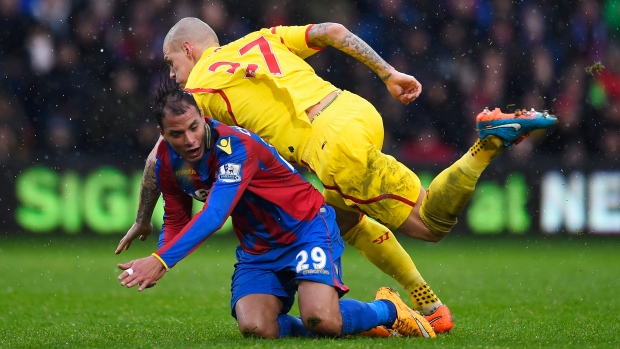Nov 24, 2014
deVos: 'Crimes Against Defending' prolific at every level
I keep a folder on my computer entitled "Crimes Against Defending." In this folder, I collect examples of poor defensive play, poor marking from set pieces and any other offence against the art of defending. Yes, good defending is an art form - and it is on the verge of becoming extinct.
By Jason deVos

I keep a folder on my computer entitled "Crimes Against Defending." In this folder, I collect examples of poor defensive play, poor marking from set pieces and any other offence against the art of defending. Yes, good defending is an art form - and it is on the verge of becoming extinct.
Every weekend – regardless of what league or international fixture I watch – I see more and more examples of awful defending that leave me shaking my head in disbelief. Some of the best players in the world, both male and female, are committing defensive errors that would give a U14 coach a heart attack.
The first example came in the German women’s 3-0 win over England at Wembley Stadium on Sunday. After England made a bright start to the game, rattling a shot off the German crossbar in the opening minute, they were forced to defend a German corner kick. England’s defensive set up was baffling, to say the least.
Time and time again – even at the highest levels of the game – I continue to see teams setting up to defend corner kicks without putting defensive players on either post. I cannot understand the logic of this approach, and in the case of England, it led to them conceding the first goal of the game.
The German corner kick was delivered into the perfect area; head height, level with the six-yard box and the first post. This position is ideal because the goalkeeper cannot come out to challenge the cross and a header from this distance is very difficult for the goalkeeper to save. If the header is good, she can only reasonably be expected to make a reaction save within four feet either side of her set position.
England’s decision not to put a player on either post meant that Karen Bardsley, England’s goalkeeper, had to defend the entire 24-foot width of her goal on her own – against a header from six yards out. The red shaded area in the picture below just highlights what a difficult task this is for Bardsley.

(Click here for enlarged photo)
In training, if uncontested crosses were whipped into this area for attackers to head home, goalkeepers the world over would be furious. They would be conceding goal after goal without much hope of making a save.
In this example, the ball actually came off of England defender Alex Scott’s head before nestling into the bottom right corner of England’s goal – exactly the position where a defender should have been. Had there been a defender there, it would have only required a side-foot clearance and the goal would have been saved. How this would have affected the eventual outcome of the game is impossible to say – Germany were clinical and full value for their 3-0 win – but to concede a goal that early in a game against one of the best teams in the world is a recipe for disaster.
One positive to come out of the game for England was that it was watched by a crowd of over 45,000 - a fantastic turnout for a women’s friendly.
Another example that went into my "Crimes Against Defending" folder this weekend came in Crystal Palace’s 3-1 win over Liverpool.
When did defending corner kicks become about turning your back on the ball and wrapping your arms around the attacker, rather than about heading the ball away from danger? Look at the foul being committed by Crystal Palace’s Brede Hangeland on Liverpool’s Martin Skrtel, pictured below:

(Click here for enlarged photo)
If this sort of defending occurred anywhere else on the pitch, it would immediately be called for a foul. Yet referees everywhere allow this to go unpunished in the penalty area.
The only way to remedy this type of defending is for referees to award a penalty kick for this type of foul. A strong argument can be made that Hangeland is denying Skrtel an obvious goal-scoring opportunity – it is a header from eight yards out, after all.
On the evidence of what I’m seeing every weekend, defending isn’t being taught to young players anymore, let alone to professional players. Awarding a penalty kick for clutching and grabbing in the penalty area will force players to do what they are supposed to do – play the ball rather than the man.
